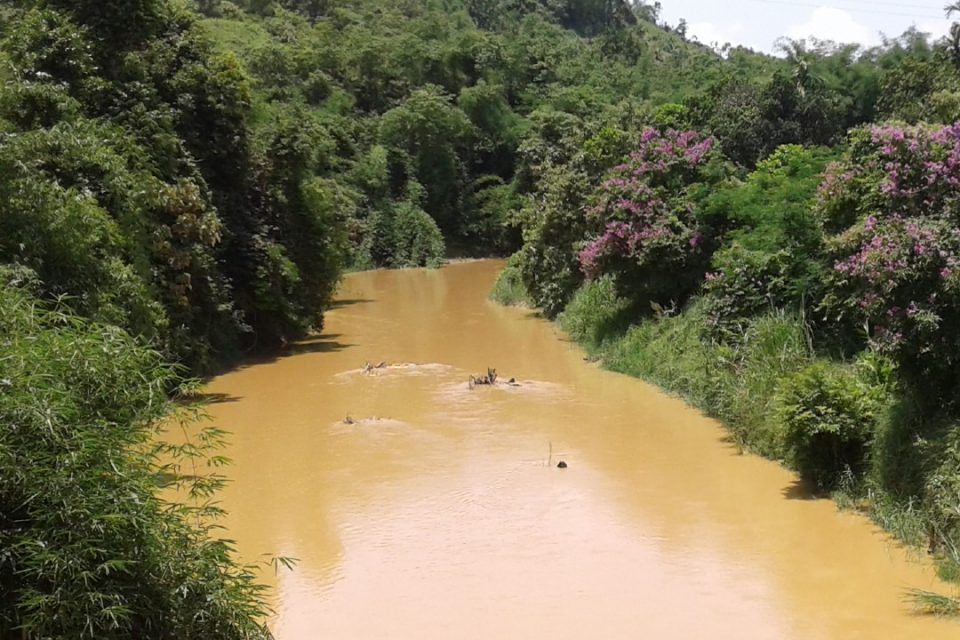Streamflow is the key parameter in most water resources decisions
In many river basins, pressure on water resources is increasing to unprecedented levels because of ongoing population growth, food security concerns, socio-economic development, and climate change. Effective management of water resources is based on a good understanding of the hydrological processes and requires accurate information on the quality and quantity of the available water. Streamflow is the key parameter in most water resources allocation and management decisions.
However, streamflow is among the most difficult variables to measure on a permanent basis. It is therefore derived from stage levels—which are much easier to measure—with the use of a rating model. The rating model is the relation between river stage and discharge at a control section. It is based on the premise that water level is a reliable indicator of flow area and flow velocity, which together make up discharge. Developing the rating model—sometimes referred to as rating curve—requires accurate discharge measurements.
Low confidence in historic hydrographs
Unfortunately, the collection of discharge data for rating model development is expensive because it requires field visits to often remote locations. Maintaining an effective hydrological monitoring network is generally beyond the capacity of many water agencies, in terms of budgets, human resources, instrumentation, and logistic facilities such as boats and vehicles.
Consequently, available discharge data are often inadequate and do not cover the entire range of stage. Measurements of high flows and floods are commonly absent. In addition, there are often multi-year periods without any discharge measurement at all. As a result, we have low—or at most medium—confidence in the quality of the rating model and the derived streamflow time series. The absence of accurate water data translates into uncertainly over available water resources. It may result in overly conservative water management decisions and subsequent lost potential, and low productive use of water that adversely affects socio-economic development. It could ultimately lead to resource scarcity and conflicts.
The hydraulic approach to rating model development
Improving the quality of the rating curve is often the most effective step to improve the quality of the (historic) discharge time series.
The hydraulic approach to rating development represents a vast improvement over the statistical curve fitting practices used by many water agencies. While the method was developed decades ago and is commonly used by agencies such as USGS and Environment Canada, it is no longer in use in many countries because the method was not included in popular water data management software introduced in the late 1980s—such as HYDATA. The know-how was subsequently lost.
The hydraulic approach is a robust conceptual methodology that is based on the hydraulic characteristics of the control section. Field observations of channel properties suggest the shape of the rating model and provide clues for the coefficients of the standard rating equation. Historic and current discharge measurements are then used to validate and calibrate the conceptual rating model. In many cases, only a limited number of data points is sufficient to confirm the model. It produces an accurate and defensible rating curve that corresponds with the hydraulics of the river. Extrapolation is justified for the range explained by the conceptual model, which is typically beyond the maximum discharge measured. Moreover, since the hydraulic approach requires far less field data, it will substantially reduce the need for expensive field visits.
Additionally, by analyzing channel behavior and the hydraulic characteristics of the control section, the rating model can often be inferred for periods without discharge measurements with reasonable confidence. The recovered hydrographs will expand the historic discharge timeseries and result in a better understanding of the hydrological processes.
Finally, the hydraulic approach provides the basis for a very strategic field measurement program that identifies a priori which data points are missing, and where measurements are needed. Teams are sent into the field only when these specific hydrologic conditions occur.
Advantages of the hydraulic approach:
- Increase the accuracy of streamflow data
- Recover streamflow timeseries for periods without discharge measurements
- Increase confidence in discharge timeseries before undertaking comprehensive modeling efforts
- Drastically cut the costs of water data by reducing the need for expensive field visits
Contact Bart Hilhorst (hilhorst@fireflybay.com) if you wish to learn more about the hydraulic approach to rating curve development. He has extensive experience in using the methodology to improve the quality of (historic) discharge time series and optimize field measurement programs.
